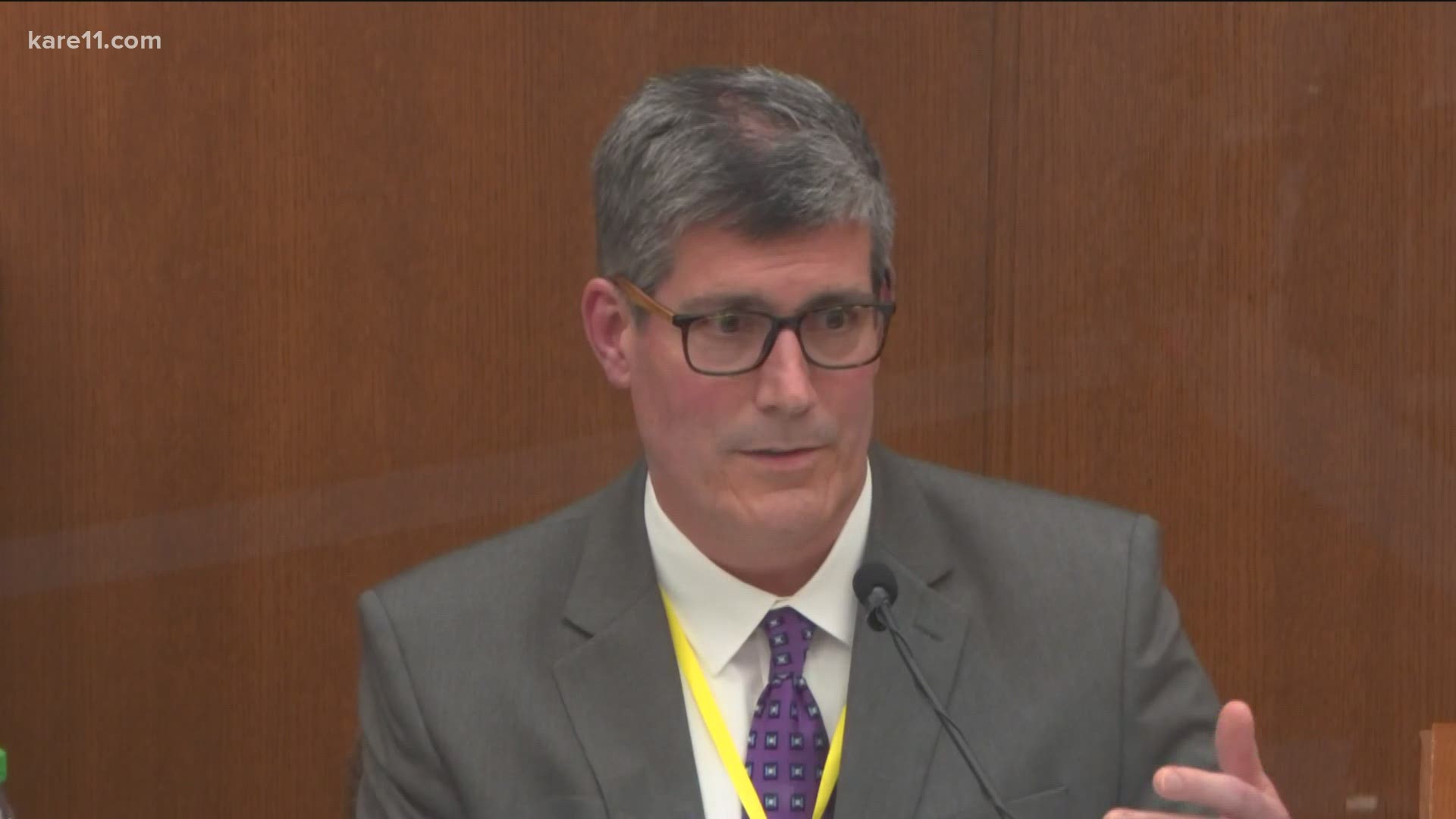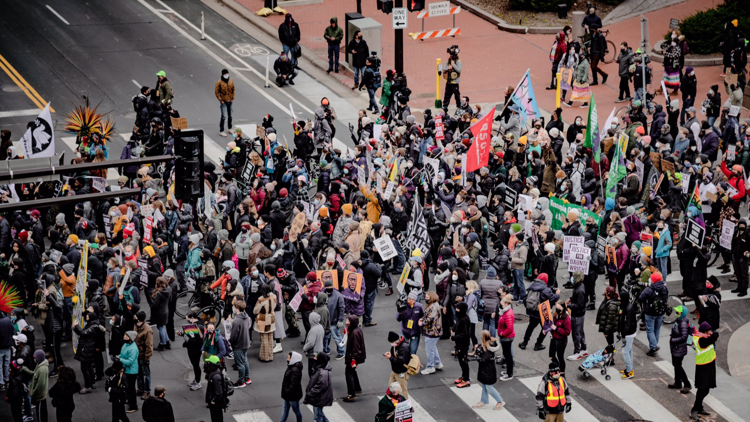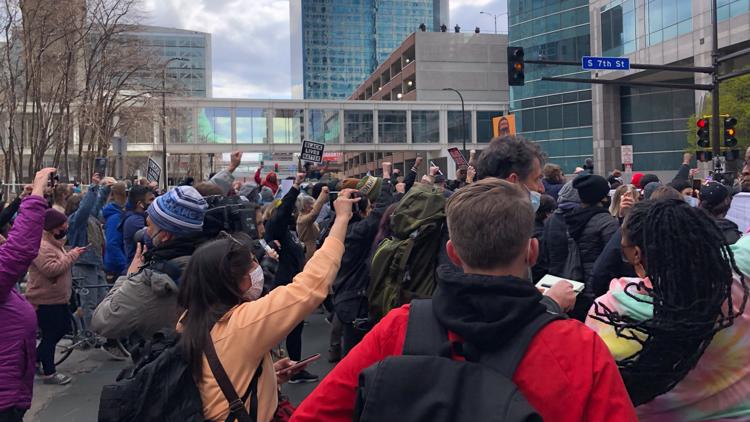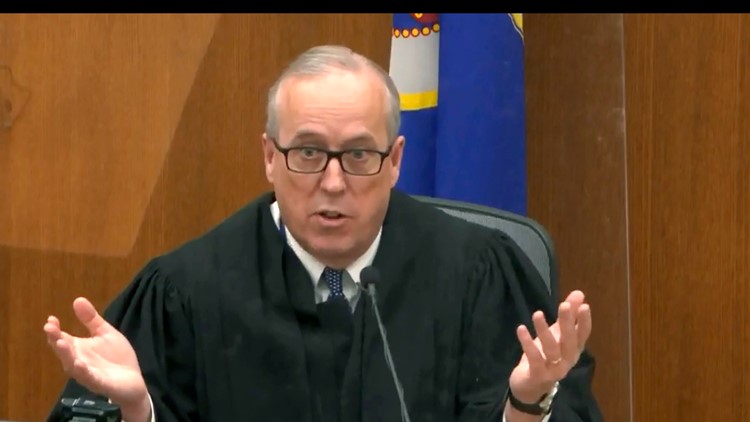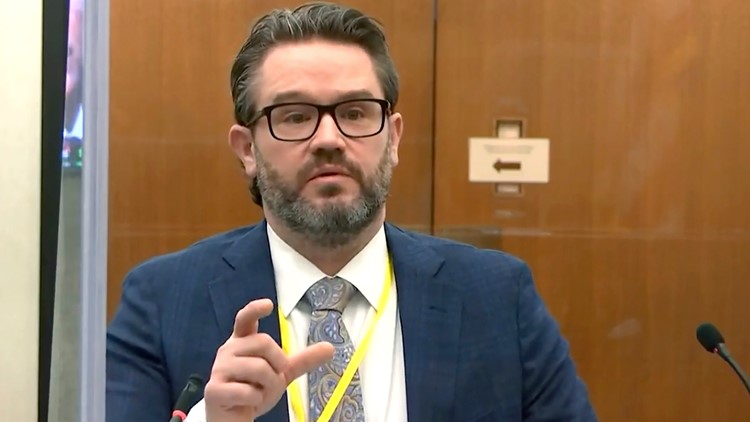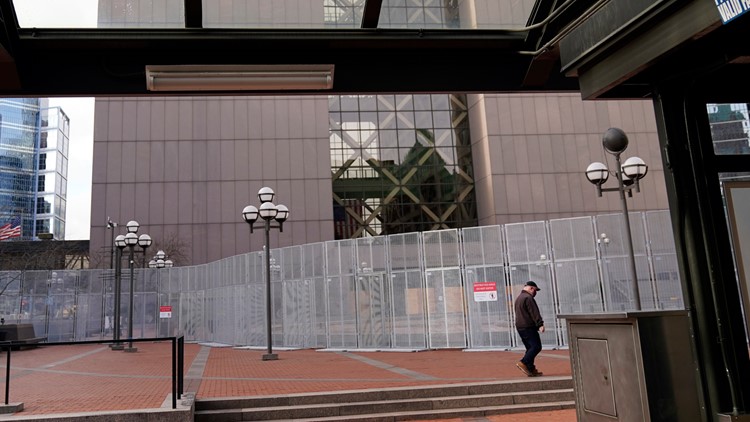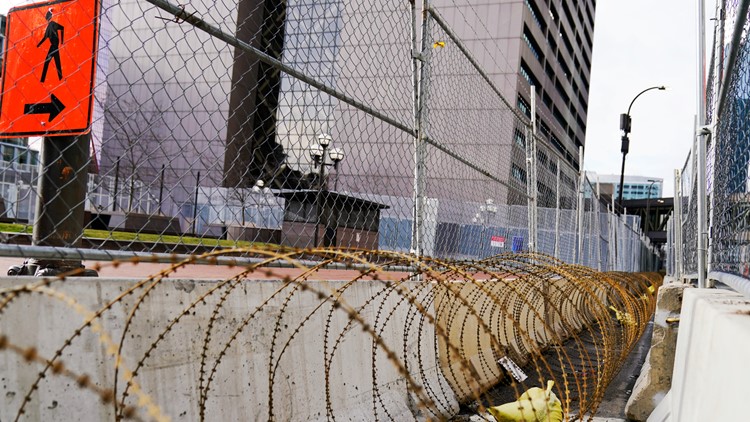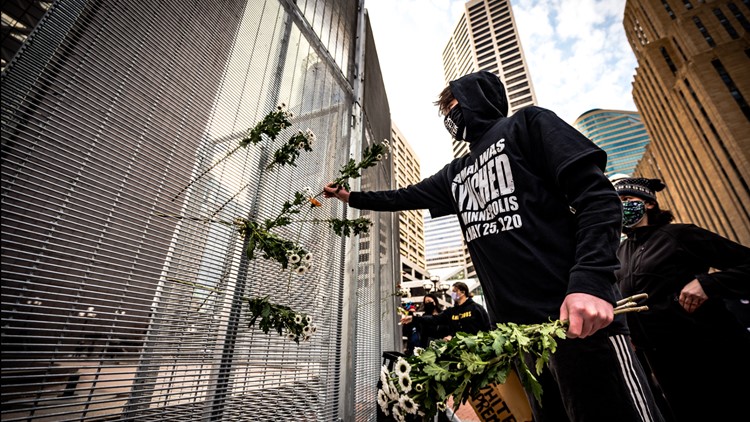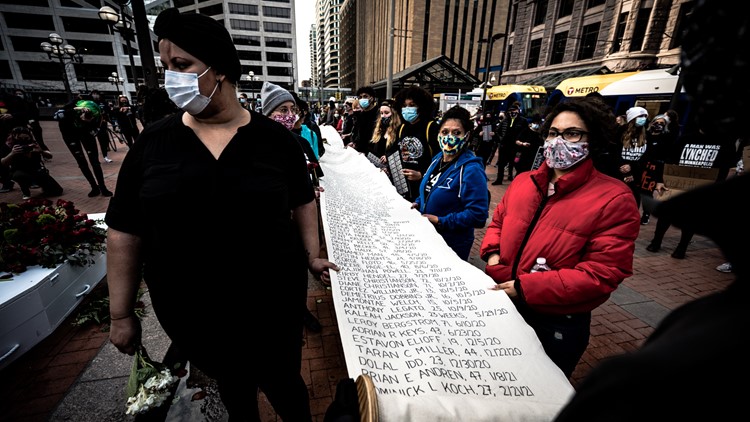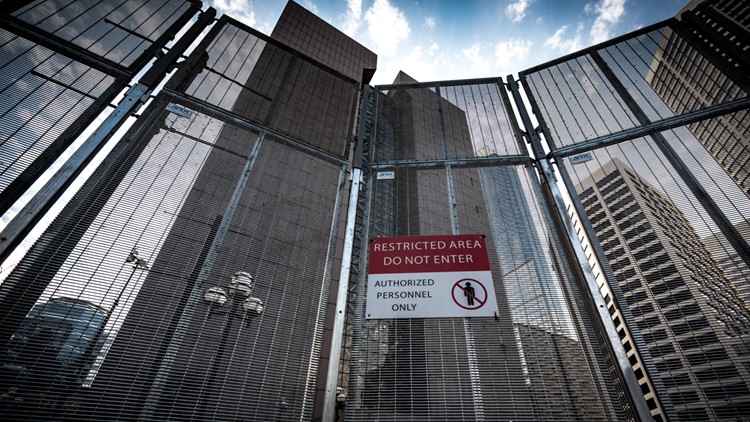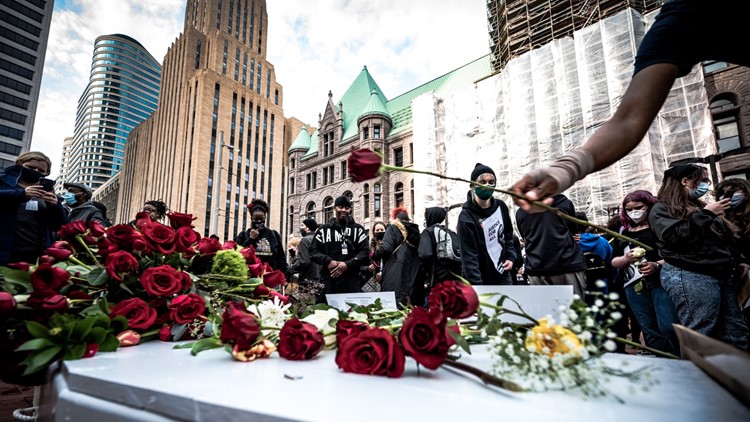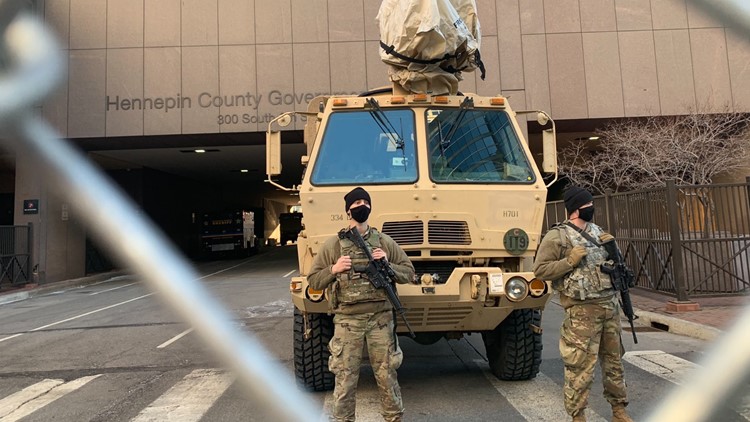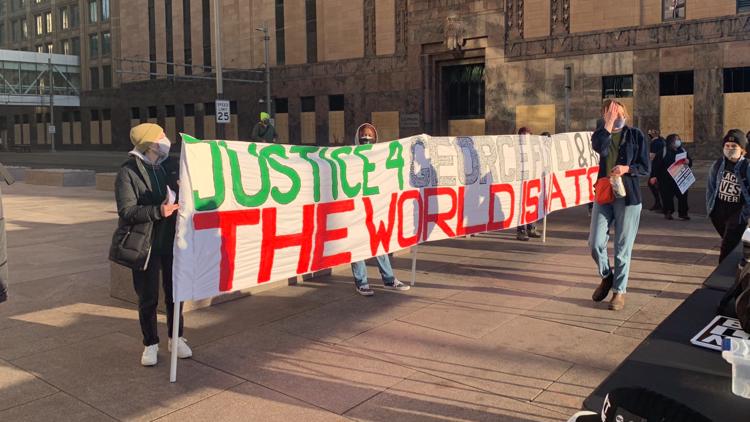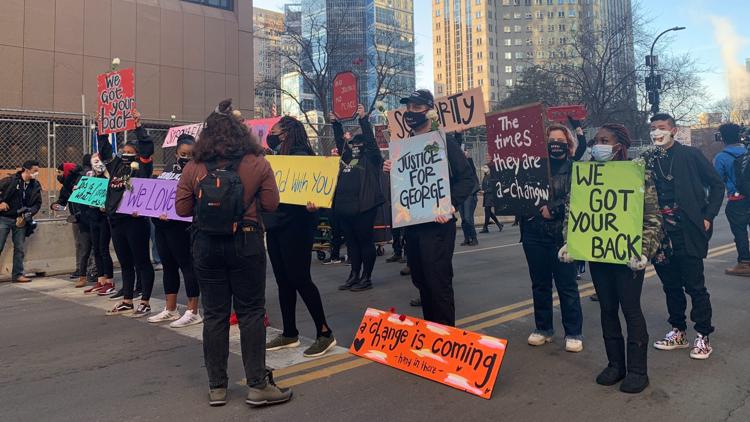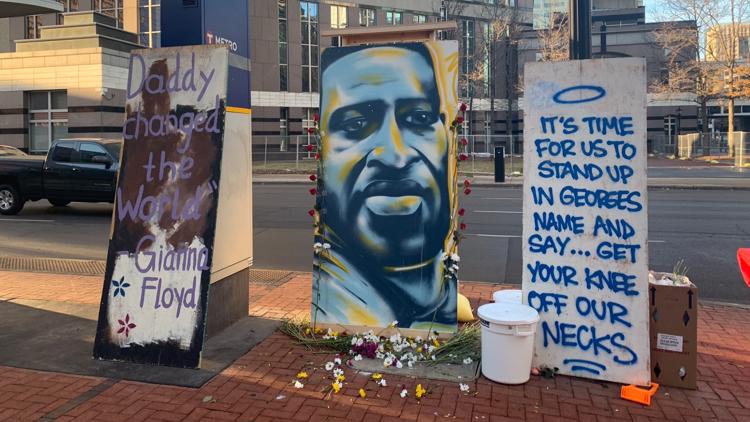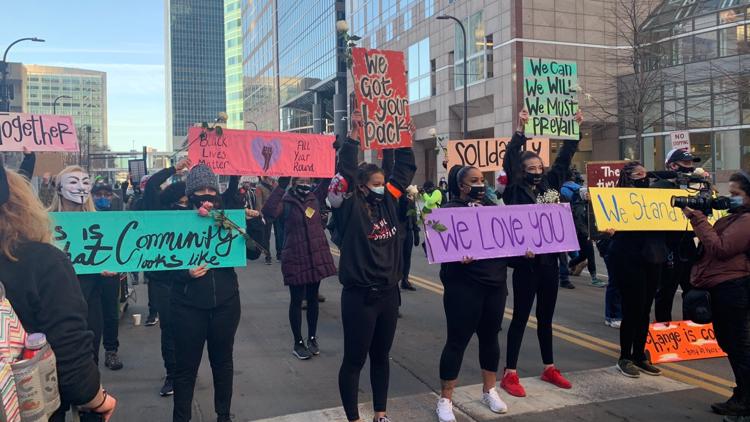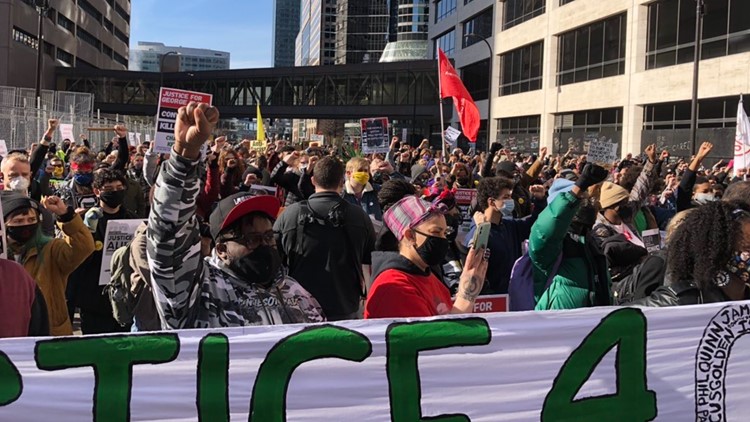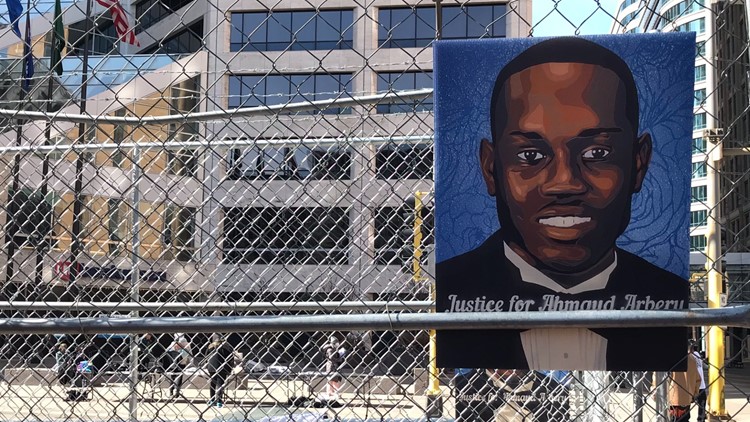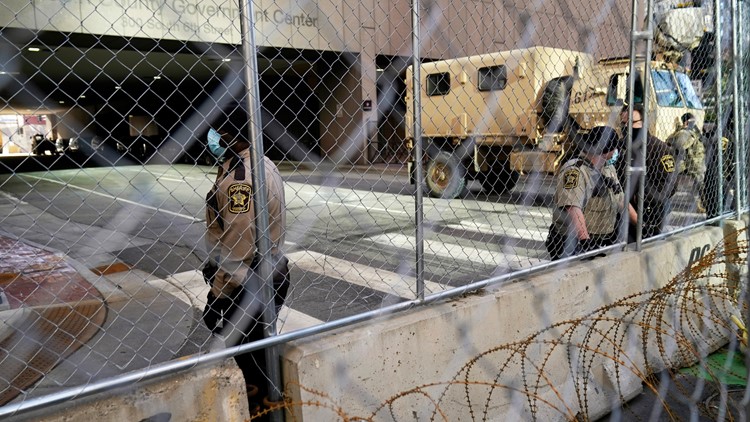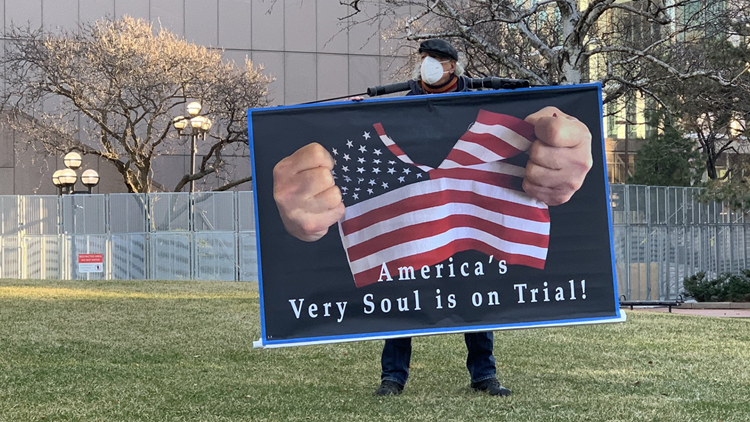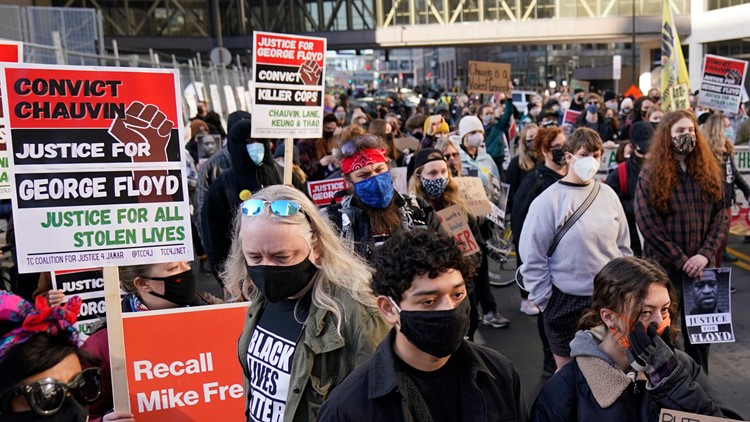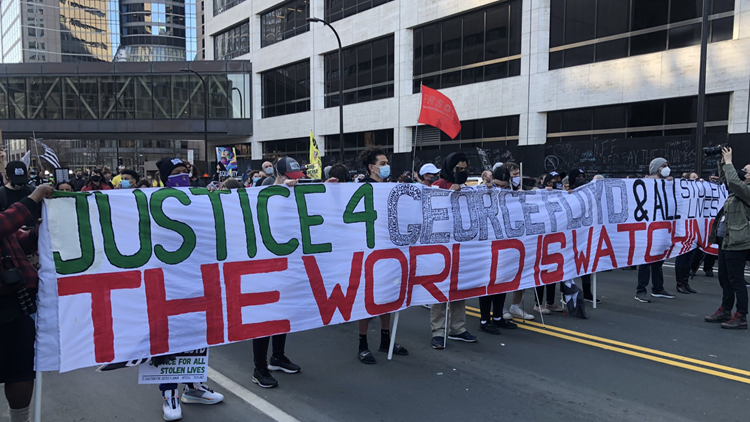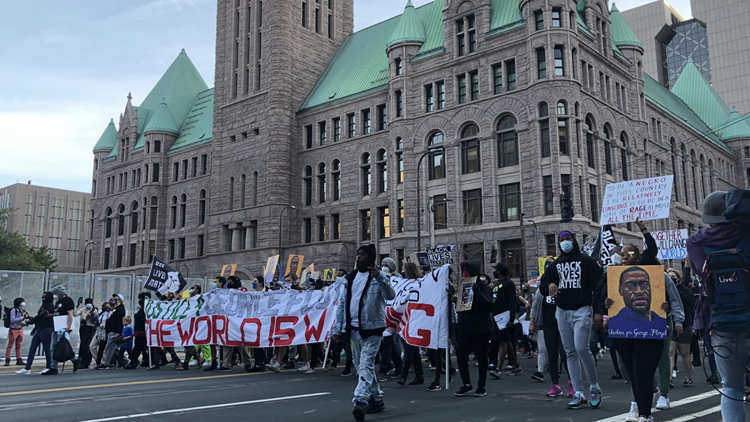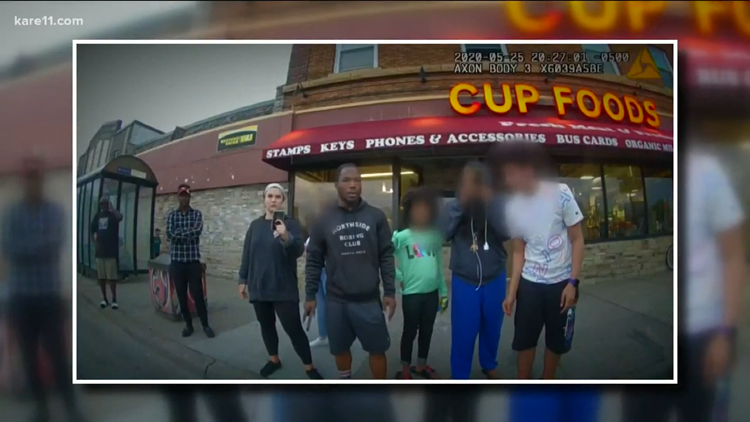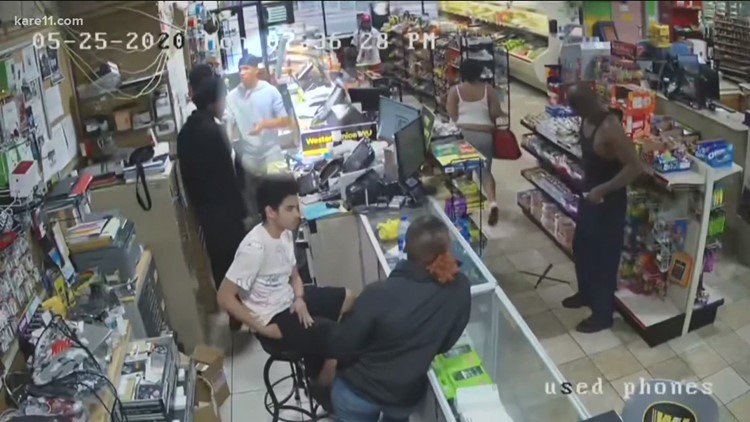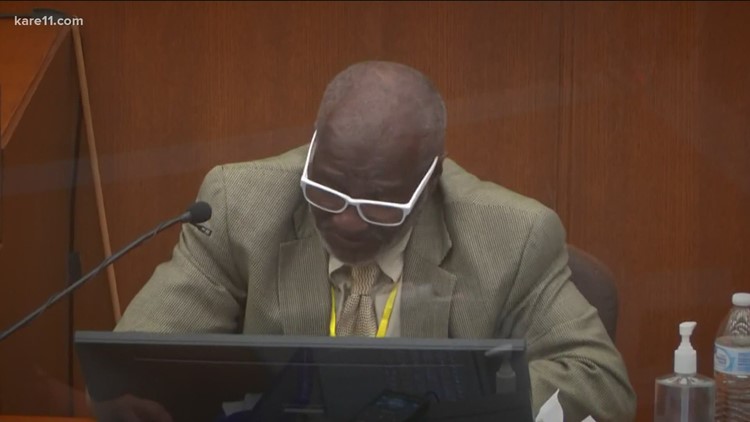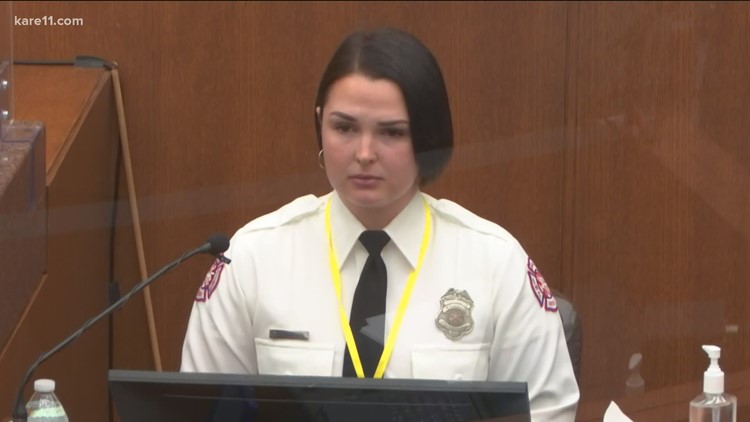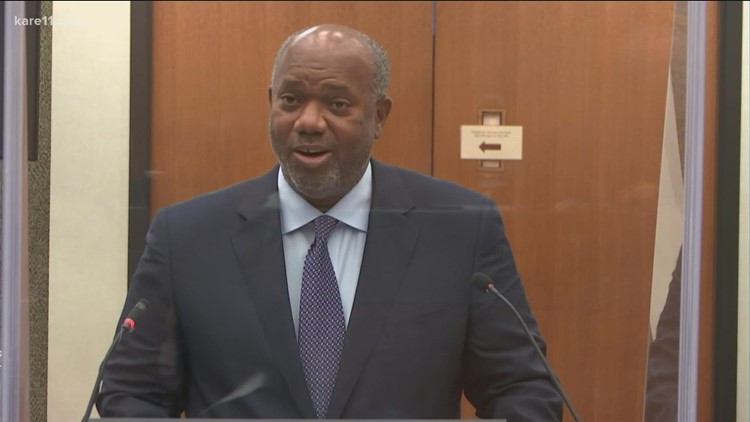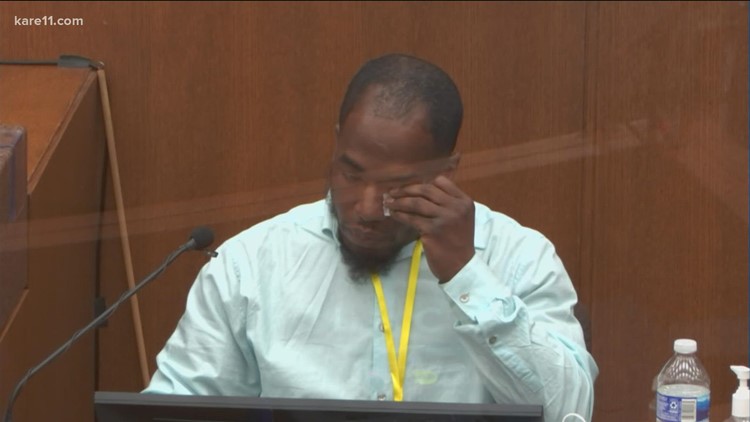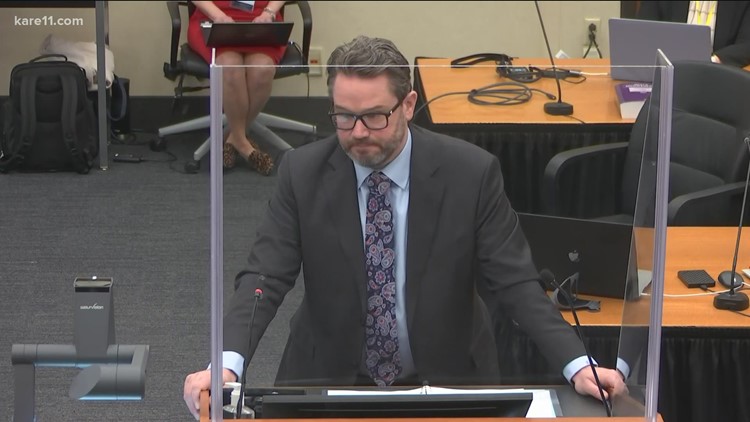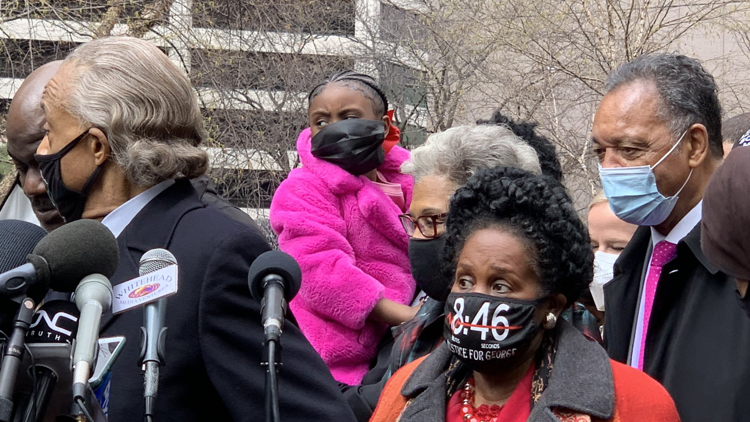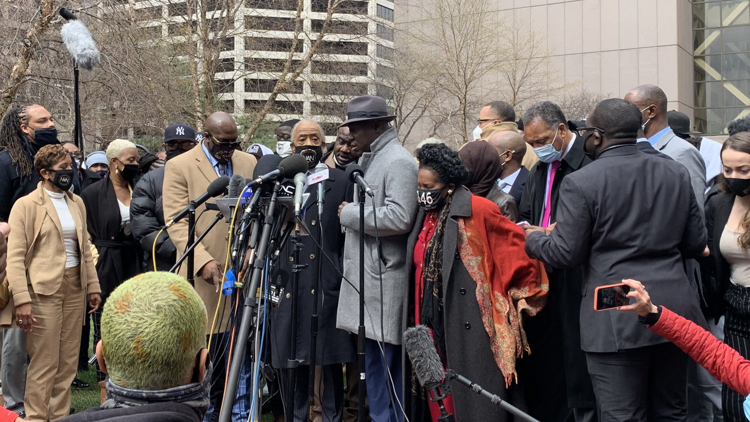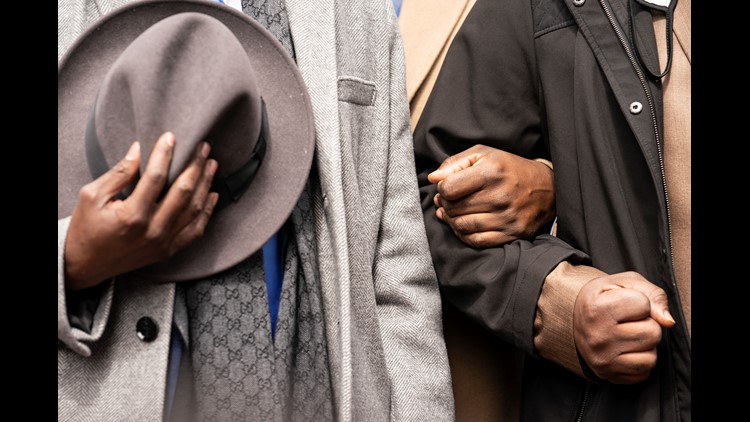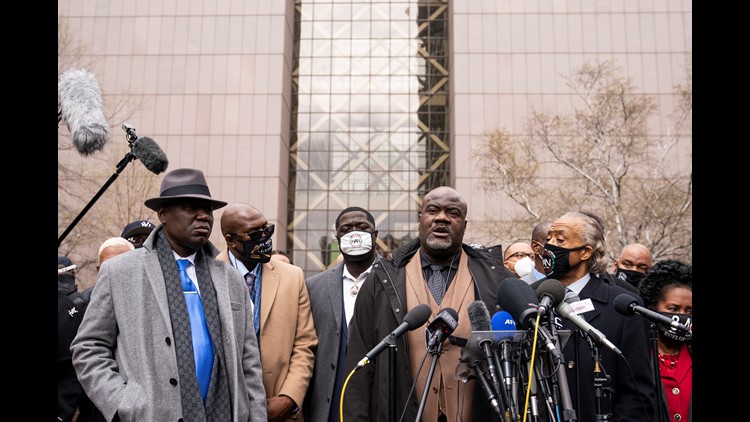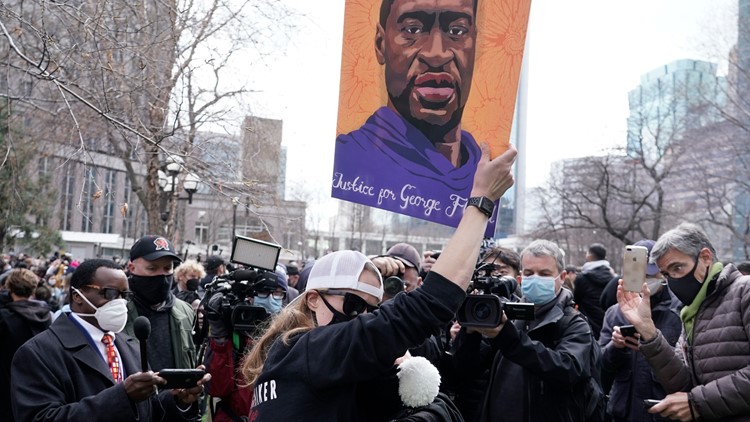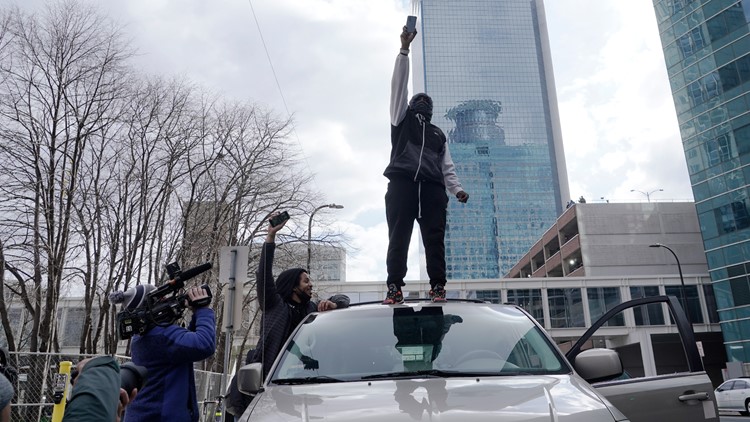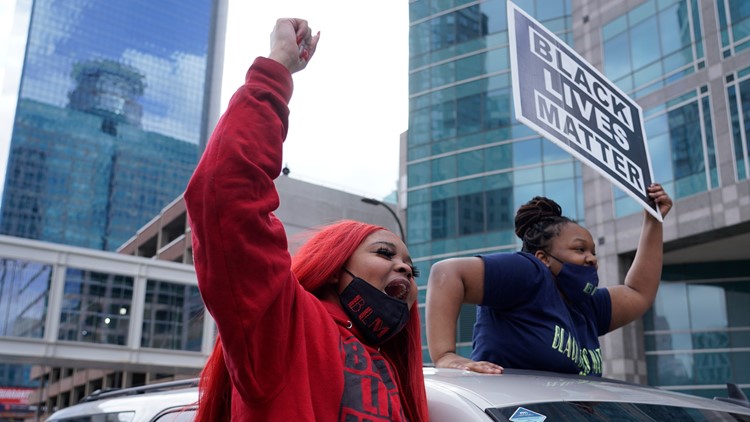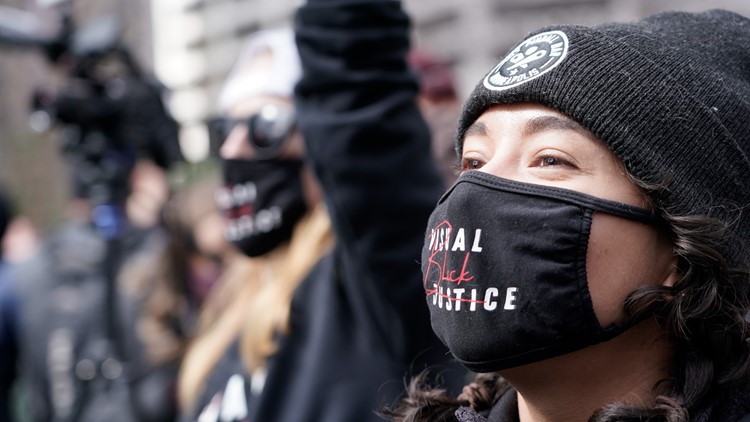MINNEAPOLIS — Editor's note: Some of the images depicted in the video and testimony are graphic. If you or someone you know have been affected by the content of recent broadcasts and are looking for mental health resources, contact the National Alliance on Mental Illness. NAMI provides guidance to those who are trying to navigate the mental health system. Please know you are not alone. Have a question you'd like to hear our trial experts answer? Send it to lraguse@kare11.com or text it to 763-797-7215.
Friday, April 9
- Hennepin County Medical Examiner Dr. Andrew Baker took the stand
- Law enforcement subdual, restraint and neck compression 'tipped him over the edge given his underlying heart disease and his toxicological status.'
- Baker said he believes heart disease, drug presence 'played a role'
- Law enforcement subdual, restraint and neck compression 'tipped him over the edge given his underlying heart disease and his toxicological status.'
- Forensic pathologist Dr. Lindsey Thomas, who helped train Dr. Baker, offered opinion on George Floyd's cause of death
- 'There's no evidence to suggest he would have died that night, except for the interactions with law enforcement'
- Trial expert said Friday was the 'most important day of the trial'
- Medical doctor to testify Monday, 'spark of life' testimony still possible
The man experts say may be the most critical witness in the Derek Chauvin trial took the stand Friday: Chief Hennepin County Medical Examiner Dr. Andrew Baker, who performed George Floyd's autopsy.
Chauvin is charged with second-degree murder, second-degree manslaughter and third-degree murder in Floyd's death. Bystander and police camera video showed Chauvin with his knee on Floyd's neck for 9 minutes and 29 seconds on May 25, 2020.
Baker ruled Floyd's cause of death to be "cardiopulmonary arrest complicating law enforcement subdual, restraint, and neck compression." Attorney Doug Kelley, who is serving as a trial expert for KARE 11, said Friday could be "the most important day of the trial," as defense attorney Eric Nelson drew his opening statement "right from the pages of the autopsy report and the other things that Baker said."
A key part of Nelson's strategy is to convince the jury that other factors, such as pre-existing medical conditions and the presence of fentanyl and meth in his system, caused Floyd's death.
When prosecutor Jerry Blackwell asked Baker to explain the cause of death he listed for Floyd, he started by explaining that Floyd had an enlarged heart that already needed more oxygen and was limited by partially blocked arteries. Then, he said, an altercation with a physical restraint and pain would cause stress hormones and pour adrenaline into the body.
"In my opinion the law enforcement subdual, restraint and the neck compression was just more than Mr. Floyd could take by virtue of those heart conditions," Dr. Baker said. In another statement, he said the restraint "tipped him over the edge."
Upon cross-examination, Baker told the defense that he believed Floyd's heart disease, hypertension and drugs in his system "played a role" in his death. He also clarified a statement he made to federal authorities in which he said, "Had Mr. Floyd been home alone in his locked residence with no evidence of trauma, and the only autopsy finding was that fentanyl level, then yes, I would certify his death as due to fentanyl toxicity."
Before Baker testified, the prosecution called forensic pathologist Dr. Lindsey Thomas, who helped train Baker. Blackwell asked her to explain Floyd's autopsy to the jury.
"The point is that it's due to law enforcement subdual, restraint, and neck compression," she said. "What it means to me is that the activities of the law enforcement officers resulted in Mr. Floyd's death."
Thomas said she ruled out drug overdose and heart issues as causes of death in her analysis.
She told the jury there's no evidence George Floyd would have died that night "except for the interactions with law enforcement."
The judge adjourned early Friday, with a medical doctor expected to testify next for the state. They may also introduce a family member or friend as a "spark of life" witness.
Attorney and trial expert Doug Kelley said he expects the state to rest its case on Monday.
LIVE UPDATES
Friday, April 9
3:50 p.m.
Judge Peter Cahill told the jury that the next witness is a medical doctor, but they won't have time to complete his testimony Friday.
He adjourned early and told the jury to return at 9:30 a.m. Monday, after he and the attorneys sort out legal issues.
It's possible a family member or friend will testify as a "spark of life" witness Monday as well.
"I would expect the state to rest on Monday," said attorney Doug Kelley, who is serving as a trial expert for KARE 11.
2:40 p.m.
Defense attorney Eric Nelson cross-examined the medical examiner who performed George Floyd's autopsy Friday afternoon. Dr. Andrew Baker's testimony is expected to be key to Nelson's defense.
Nelson asked Baker to define the term "complicating" he used in his cause of death ruling, and he said from a medical perspective it's "an untoward event on the heels of an intervention that happened."
Nelson also asked what "other contributing conditions" means.
"When you put those on death certificate as a physician, what you're saying is 'I think they played some role in the death,'" Baker said. "You don't list trivial stuff on there that didn't play a role."
Nelson asked if Baker believes Floyd's heart disease, history of hypertension and the drugs that were in his system played a role in his death.
"In my opinion, yes," Baker said.
Baker said he did not watch video of Floyd's restraint before he performed the autopsy because he didn't want to go in with "preconceived notions" about what happened.
"That might tempt you to skip certain steps or not do something that could turn out to be relevant," he said.
Baker said high blood pressure is the most common cause of an enlarged heart, which he testified he observed in Floyd. He said that is consistent with Floyd's medical history.
Baker said a coronary artery that is 75% narrowed or greater can cause sudden death.
Nelson asked about methamphetamine in Floyd's system, and he said it is "not good if you have bad coronary arteries." He said he is not aware of a "safe level" of meth.
Baker said he ultimately did watch videos of Chauvin and other officers restraining Floyd.
Baker agreed that Floyd's hand abrasions could have been caused by the initial descent to the ground when he was restrained by officers. He also said based on his knowledge of medical research, the prone restraint is not "inherently dangerous."
Dr. Baker told Nelson that a medical examiner will only see evidence of asphyxia if the person survived for some time.
Nelson noted Baker's inclusion of "neck compression" in the cause of death. He asked where exactly Baker thought Chauvin's knee was placed, based on the video.
Baker said on the back, side or the area in between Floyd's neck. He said the knee didn't appear to be on the carotid artery.
Nelson asked Baker several questions about symptoms of hypoxia in a living person, and he said he would defer those to a pulmonologist.
Baker said he has certified fentanyl overdose deaths with a similar level to that found in Floyd's blood. He said he has seen levels as low as 3 nanograms per milliliter. A forensic toxicologist testified Thursday that Floyd's level was 11.
"You also want to try to piece together the person's history of how long they've been using it, how tolerant they are," he said.
Baker confirmed that he told prosecutors in a previous meeting that there was no physical evidence of asphyxia.
Nelson asked Baker if he remembers describing the level of fentanyl in Floyd's system as "fatal."
He said that he remembers saying that "in other circumstances, it would be a fatal level."
Baker added that he believes he said something like, "Had Mr. Floyd been home alone in his locked residence with no evidence of trauma, and the only autopsy finding was that fentanyl level, then yes, I would certify his death as due to fentanyl toxicity."
He also told Nelson that he clarified his opinion of Floyd's cause of death to federal officials, including the FBI.
"He experienced a cardiopulmonary arrest in the context of law enforcement subdual, restraint and neck compression," Baker said. "It was the stress of that interaction that tipped him over the edge given his underlying heart disease and his toxicological status."
Baker said when he testified before a grand jury, he deferred several questions to other experts like pulmonologists, emergency room doctors and cardiologists because the questions were getting "outside the scope of (his) expertise."
Prosecutor Jerry Blackwell questioned Baker upon redirect and asked him to return to the topic of George Floyd's cause of death.
"My opinion remains unchanged, it's what I put on the death certificate last June," Baker said.
He said he believes the other contributing conditions he listed are "contributing causes" but not "direct causes."
1:30 p.m.
One of the most critical witnesses to both the prosecution and the defense took the stand Friday afternoon. Chief Hennepin County Medical Examiner Dr. Andrew Baker performed the George Floyd's autopsy.
Baker said in Floyd's autopsy, he did two things that were unique: Making incisions on the wrists and back to look for evidence of bruising under the skin.
He said in addition to the physical exam, the medical examiner has to consider the person's medical history and typically does interviews with the family.
"To get the cause and manner of death right, you need to assemble all those things for the full picture," he said.
Baker also said he kept a "robust data set" of his research so that someone else could look at his findings and make their own conclusion, instead of taking his word for it.
Prosecutor Jerry Blackwell distributed autopsy photos of George Floyd to the jury and Dr. Baker by hand. That means they aren't displayed on a screen to be broadcast live to the public.
Baker talked the jury through the scrapes on Floyd's face, left shoulder and right hand. Previous medical experts testified those indicated that Floyd was trying to push his right side up to get more oxygen.
Blackwell asked Baker why he didn't take a picture of Floyd's heart while it was in tact.
"I don't normally photograph organs that appear to be perfectly normal," he said. "His heart was enlarged by weight but that wouldn't really be something you could capture in a photograph."
Blackwell showed the jury photos of Floyd's coronary arteries from the autopsy. Baker documented Floyd's left anterior descending coronary artery at 75% narrowed.
Baker testified he didn't see any damage to the heart muscle, but clarified that damage from a heart attack wouldn't be visible unless someone survived for some time afterward.
Baker said he did not see any evidence of an acute injury to his brain.
Dr. Baker testified that he sent blood samples to a lab. The NMS Labs toxicologist who examined it testified Thursday.
Blackwell asked if Baker noted any pills or pill fragments in Floyd's stomach, and he said no.
Floyd had previously tested positive for COVID-19, which "did not factor into my cause of death determination," Baker said. He testified that was because Floyd didn't show any COVID symptoms and his lungs did not show the impacts of COVID.
Baker also noted that Floyd had "sickle cell trait."
"If you just have sickle cell trait chances are you will go through life," he said, which is different from having sickle cell disease.
"It's really just a fluke that it got picked up at autopsy, in my opinion it doesn't have anything to do with why he died," he said.
Baker also said he "happened to find" a paraganglioma tumor during the autopsy.
"I don't feel Mr. Floyd's paraganglioma had anything to do with his death," he said.
Baker wrote in his report that the manner of death was "homicide." It's one of five possible manners of death: Natural, accident, suicide, homicide or undetermined.
"We apply the term homicide when the actions of other people were involved in an individual's death," he said. "Homicide in my word is a medical term, it's not a legal term."
He said most drug overdoses would be ruled accidental.
Blackwell asked Baker about the language he used to report Floyd's cause of death: "cardiopulmonary arrest complicating law enforcement subdual, restraint, and neck compression." Blackwell asked Baker what "cardiopulmonary arrest" means.
"That's really just fancy medical lingo for the heart and the lungs stopped," he said.
Baker confirmed that "complicating" means "occurring in the setting of."
"You know he had very severe underlying heart disease," he said. "Mr. Floyd also had what we call hypertensive disease."
Baker explained that Floyd had a heart that already needed more oxygen and was limited by partially blocked arteries.
"In the context of an altercation with other people that involves things like physical restraint, that involves things like being held to the ground, that involves things like the pain that you would incur from having your cheek up against the asphalt and an abrasion on your shoulder, those events are going to cause stress hormones to pour out into your body specifically things like adrenaline."
That adrenaline is going to ask your heart to beat faster and ask your body for more oxygen, Baker said.
"In my opinion the law enforcement subdual, restraint and the neck compression was just more than Mr. Floyd could take by virtue of those heart conditions," Baker said.
Baker said the top-line cause of death is the "most important thing that precipitated the death." Fentanyl was listed in the "other contributing conditions" section. Baker said that indicates they "played a role in the death but didn't directly cause the death."
11:15 a.m.
Defense attorney Eric Nelson cross-examined Dr. Lindsey Thomas, a forensic pathologist called by the state to explain George Floyd's autopsy.
Nelson asked Thomas to explain the term "complicating" used in Dr. Baker's report.
"The way I would think of it in this setting is both things were present, that there was a cardiopulmonary arrest and that it was due to law enforcement subdual, restraint and compression."
Thomas said she agreed that Floyd's heart was "slightly enlarged" upon autopsy, but that it's difficult to use averages because every person is different.
Regarding Floyd's 90% blocked coronary artery, Thomas said anything over 75% would be "something that in the absence of another cause of death, could be used to explain death."
She also said some people live with 100% blockage.
Nelson asked Thomas to confirm that Floyd also had a left anterior descending artery with a 75% narrowing, and was experiencing an exertion of stress producing adrenaline.
"So the heart has to work very, very hard in this case, OK?" Nelson said.
He asked Thomas what she would conclude if she found Floyd dead in his apartment, without officers present.
"In that very narrow set of circumstances, I would probably conclude that the cause of death was his heart disease," she said.
Nelson asked Thomas about a paper by Christine Hall that studied about 3,000 police prone restraints, which he said was an "analysis of actual police encounters" rather than a lab study.
"There were no deaths that occurred," he said.
"Isn't that amazing," Thomas said. She pointed out that most medical examiners have had a death from this kind of police restraint, and said she believes the fact that the study was done in Canada may have some bearing on the results.
"Is the prone position, in and of itself, inherently dangerous?" Nelson asked.
"Not if there are no other factors," Thomas said.
Nelson pointed out that chiropractors use the prone position, and it is used to treat COVID patients. He asked Thomas to confirm that no bruising or abrasions were found in Floyd's neck or back area, and she said that is correct.
Thomas said there are "lots of variables" in what causes a bruise to form.
Nelson asked Thomas about symptoms of hypoxia like confusion and fast breathing. She said those "could be" signs. Nelson also asked if meth and adrenaline would have increased the heart's oxygen needs. She said yes.
Thomas acknowledged that while Floyd had norfentanyl in his system, indicating that his body was already breaking down the fentanyl he'd taken, that does not rule out the possibility that he took another acute dose more recently.
Nelson asked Dr. Thomas if she would consider Floyd's death an overdose if the police were not present.
"In the absence of any of these other realities, yes, I could consider that to be an overdose," she said.
Upon redirect, prosecutor Jerry Blackwell began to compare Nelson's question to the idea of asking what happened to Abraham Lincoln without considering John Wilkes Booth. The defense objected and the judge agreed.
Instead, Blackwell asked Thomas what her opinion of the cause of death is considering the presence of the police officers and the restraint.
"The cause of death was the law enforcement subdual, restraint and compression, and the manner of death was homicide," she said.
Blackwell asked Thomas to explain the symptoms of fentanyl overdose to the jury. She said it is a slowing of the respiratory rate in a "very gradual, peaceful, non-struggle kind of way, what is described as people just fall asleep and may just slump gradually over."
Thomas said if the symptoms of a fentanyl overdose are not present, "then it makes no sense to conclude that there was an overdose from fentanyl."
She also said she saw no evidence that Floyd suffered from a sudden fatal arrhythmia or heart attack.
Thomas told Blackwell she did not know how to interpret the Canadian study Nelson referenced about prone restraint because it was "so contrary to the actual experience of forensic pathologists in the United States."
9:25 a.m.
The state called forensic pathologist Dr. Lindsey Thomas as the first witness of the day Friday. Thomas has worked with the Hennepin County Medical Examiner's Office and helped to train Dr. Andrew Baker, who performed Floyd's autopsy.
Thomas explained the process of a medical examination to the jury, telling them that the person's history and what they were doing before they died are important to consider as well as the physical exam. Dr. Thomas told prosecutor Jerry Blackwell that she has performed about 5,000 autopsies, and has testified in court "probably 100 times."
She said she did not ask to be paid by the state.
"I knew this was going to be important and I felt like I had something to offer and I wanted to do what I could to help explain what I think happened," she said.
Thomas said she reviewed all the medical examiner materials, Floyd's medical records, interviews and videos of Floyd's restraint. "I've never had a case like this, that had such thorough documentation of the terminal events," she said.
She said she agrees with Baker's assessment of the cause of death: "cardiopulmonary arrest complicating law enforcement subdual, restraint, and neck compression."
"In this case I believe the primary mechanism of death is asphyxia, or low oxygen," she said.
Dr. Thomas explained that "cardiopulmonary arrest" is the heart stopping, which is the way most people die. She said this would be differentiated from a sudden heart attack.
"The point is that it's due to law enforcement subdual, restraint, and neck compression," she said.
Blackwell asked Dr. Thomas to tell the jury what the cause of death listed on the autopsy means.
"What it means to me is that the activities of the law enforcement officers resulted in Mr. Floyd's death," she said.
Dr. Thomas said in the videos of the prone restraint, she watched Floyd breathing and speaking until "over time you can see that his breathing is getting more and more difficult, and he's saying less and less."
"And then about halfway through the whole restraint subdual compression process, he stops breathing," she said. "Well, he first stops speaking entirely."
Shortly after that she said Floyd starts "twitching" in what she views as an anoxic seizure, an involuntary reaction to the brain not getting enough oxygen. She said then the subdual continues for "many minutes more" even after officers find there is no pulse.
"At that point his heart has also stopped," she said.
Blackwell asked Thomas about the section of Floyd's death certificate that lists "other contributing conditions," which included arteriosclerotic and hypertensive heart disease, fentanyl intoxication, and recent methamphetamine use.
She said forensic pathologists use the death certificate for public health purposes as well. She said that portion gives the medical examiner a chance to list conditions that were present at the time of death, but that the medical examiner doesn't believe are directly responsible for the death.

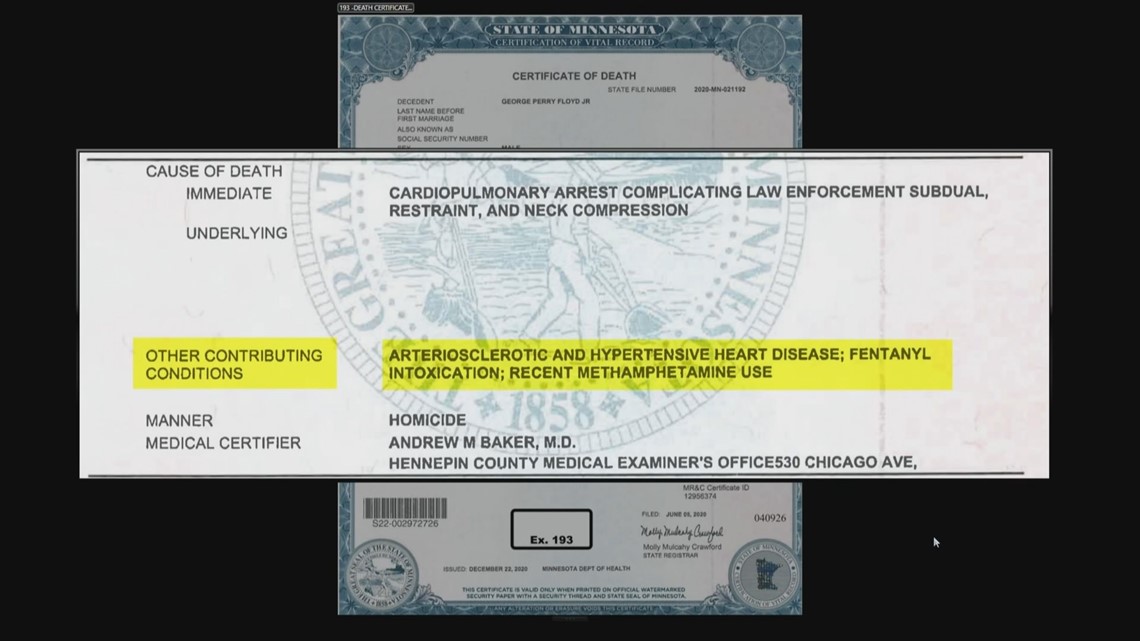
Thomas said in her opinion, Floyd's death does not fit the type of death that would result from any of those "contributing conditions," including heart disease, fentanyl or meth intoxication.
Thomas added that in her analysis, she ruled out drug overdose as a cause of death.
Dr. Thomas reviewed photos of Floyd from his autopsy, which she said show scrapes on his left shoulder and the left side of his face, and scrapes on his right knuckles. Judge Cahill did not broadcast the graphic photos to the public.
“It’s consistent with the impression from watching the video, that his face was on the ground and he was moving his face in an effort to get into a position where he could breathe,” Thomas said.
A previous medical expert testified that the officers' pressure on Floyd's left side would force him to breathe only through his right lung, causing him to try to push up the right side of his body using his face and his hands.
"There's no evidence to suggest he would have died that night, except for the interactions with law enforcement," Thomas said.
Thomas testified that she believes a secondary mechanism of death was physiological stress. She said she believes the nine minutes Floyd spent "terrified" would have caused this.
"You get chemical release, you get adrenaline," she said. "Those are thigng that make your heart race, your blood pressure go up. ... You start needing more oxygen in your muscles, you need to take more breaths, you need more oxygen for your heart rate because your heart's beating faster."
Blackwell asked Thomas about the "homicide" ruling in the death certificate. She said that rules out a drug overdose. She said homicide is defined broadly as "death at the hands of another" in medical examiner reports. There does not need to be "intent to kill" for this designation.
The prosecutor asked Thomas about studies that suggest putting someone in a prone restraint with weight on their back is not dangerous.
Thomas said the studies "bear no resemblance to real-world situations" and are not relevant to this case.
The subjects volunteered for the studies, she said, and they knew that if at any point they were in danger, the experiment would stop.
"None of them went on and on and on beyond the point where the person stopped breathing and where their heart stopped," she said.
9:15 a.m.
Judge Peter Cahill called a juror in for questioning before witness testimony began.
The judge said someone expressed concerns and asked the woman if she’d received any outside information. She said she did turn on the TV and saw a lawyer, and then turned it off.
She also told the judge her mother-in-law texted her and said it looked like a bad day for the defense.
Neither lawyer made a motion based on the information, and the judge found there was no inappropriate conduct.
Thursday, April 8
Dr. Martin Tobin is a pulmonologist who testified on the stand for around five hours, explaining to the jury that he believed Floyd's death was caused by a lack of oxygen due to his restraint by Derek Chauvin and two other former Minneapolis police officers.
Using numerous visual aids, Dr. Tobin showed the jury in detail how the prone restraint, the handcuffs and Derek Chauvin's knee all worked together to deprive Floyd of oxygen.
He said a healthy person without Floyd's medical conditions "would have died as a result of what he was subjected to."
Another doctor spoke to the jury on Thursday, Dr. William Smock. He is an emergency medical physician with a specialty in forensic medicine. Smock is an expert in asphyxial death, teaches medical students, paramedics and police officers, and gives trainings all over the country.
When asked by prosecutor Jerry Blackwell for his opinion on George Floyd's death, Smock said that "Mr. Floyd died from positional asphyxia, which is a fancy way of saying he died because he had no oxygen left in his body."
In his testimony, he also spoke about the 10 signs of the "controversial" diagnosis of excited delirium, and why he did not believe Floyd was showing any of them.
Forensic toxicologist Daniel Isenschmid was also on the stand Thursday. He works at NMS Labs, which tested George Floyd's blood and urine, sent to them by Hennepin County during the autopsy.
Isenschmid said the "most notable findings" in Floyd's blood were the presence of fentanyl and methamphetamine.
RELATED: Medical experts in Derek Chauvin trial testify that George Floyd died from lack of oxygen, restraint

